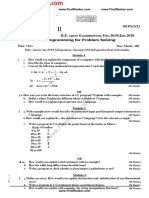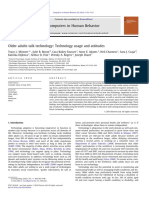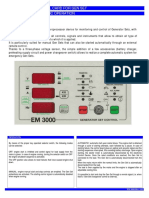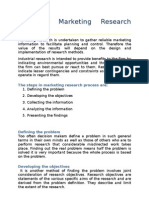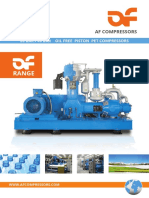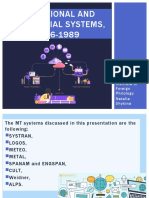Search...
Transformers in Machine Learning
Last Updated : 27 Feb, 2025
Transformer is a neural network architecture used for performing
machine learning tasks particularly in natural language processing
(NLP) and computer vision. In 2017 Vaswani et al. published a paper "
Attention is All You Need" in which the transformers architecture was
introduced. The article explores the architecture, workings and
applications of transformers.
Need For Transformers Model in Machine Learning
Transformer Architecture is a model that uses self-attention to
transform one whole sentence into a single sentence. This is useful
where older models work step by step and it helps overcome the
challenges seen in models like RNNs and LSTMs. Traditional models
like RNNs (Recurrent Neural Networks) suffer from the vanishing
gradient problem which leads to long-term memory loss. RNNs process
text sequentially meaning they analyze words one at a time.
For example, in the sentence: "XYZ went to France in 2019 when
there were no cases of COVID and there he met the president of
that country" the word "that country" refers to "France".
However RNN would struggle to link "that country" to "France"
since it processes each word in sequence leading to losing context
over long sentences. This limitation prevents RNNs from
understanding the full meaning of the sentence.
While adding more memory cells in LSTMs (Long Short-Term Memory
networks) helped address the vanishing gradient issue they still
process words one by one. This sequential processing means LSTMs
can't analyze an entire sentence at once.
For instance the word "point" has different meanings in these two
sentences:
"The needle has a sharp point." (Point = Tip)
"It is Tutorial
Deep Learning not polite toAnalysis
Data point Tutorial
at people." (Point
Python = visualization
– Data Gesture) tutorial Sign In
Traditional models struggle with this context dependence, whereas,
Transformer model through its self-attention mechanism, processes
the entire sentence in parallel addressing these issues and making it
significantly more effective at understanding context.
Architecture and Working of Transformers
1. Positional Encoding
Unlike RNNs transformers lack an inherent understanding of word order
since they process data in parallel. To solve this Positional Encodings
are added to token embeddings providing information about the
position of each token within a sequence.
2. Position-wise Feed-Forward Networks
The Feed-Forward Networks consist of two linear transformations with
a ReLU activation. It is applied independently to each position in the
sequence.
Mathematically:
FFN(x) = max(0, xW1 + b1 )W2 + b2
This transformation helps refine the encoded representation at each
position.
3. Attention Mechanism
The attention mechanism allows transformers to determine which
words in a sentence are most relevant to each other. This is done using
a scaled dot-product attention approach:
1. Each word in a sequence is mapped to three vectors:
Query (Q)
Key (K)
Value (V)
2. Attention scores are computed as: Attention(Q, K, V ) =
softmax ( QKdk ) V
T
3. These scores determine how much attention each word should pay to
others.
Multi-Head Attention
Instead of using a single attention mechanism transformers apply
multi-head attention where multiple attention layers run in parallel.
This enables the model to capture different types of relationships
within the input.
4. Encoder-Decoder Architecture
The encoder-decoder structure is key to transformer models. The
encoder processes the input sequence into a vector, while the decoder
converts this vector back into a sequence. Each encoder and decoder
layer includes self-attention and feed-forward layers. In the decoder,
an encoder-decoder attention layer is added to focus on relevant parts
of the input.
For example, a French sentence "Je suis étudiant" is translated
into "I am a student" in English.
The encoder consists of multiple layers (typically 6 layers). Each layer
has two main components:
Self-Attention Mechanism – Helps the model understand word
relationships.
Feed-Forward Neural Network – Further transforms the
representation.
The decoder also consists of 6 layers, but with an additional encoder-
decoder attention mechanism. This allows the decoder to focus on
relevant parts of the input sentence while generating output.
For instance in the sentence "The cat didn't chase the mouse, because
it was not hungry", the word 'it' refers to 'cat'. The self-attention
mechanism helps the model correctly associate 'it' with 'cat' ensuring an
accurate understanding of sentence structure.
Applications of Transformers
Some of the applications of transformers are:
1. NLP Tasks: Transformers are used for machine translation, text
summarization, named entity recognition and sentiment analysis.
2. Speech Recognition: They process audio signals to convert speech
into transcribed text.
3. Computer Vision: Transformers are applied to image classification,
object detection, and image generation.
4. Recommendation Systems: They provide personalized
recommendations based on user preferences.
5. Text and Music Generation: Transformers are used for generating
text (e.g., articles) and composing music.
Transformers have redefined deep learning across NLP, computer vision,
and beyond. With advancements like BERT, GPT and Vision
Transformers (ViTs) they continue to push the boundaries of AI and
language understanding and multimodal learning.
Comment More info
Advertise with us
Similar Reads
Data Transformation in Machine Learning
Often the data received in a machine learning project is messy and
missing a bunch of values, creating a problem while we try to train our…
15+ min read
Top Machine Learning Trends in 2025
Just as electricity transformed almost everything 100 years ago, today I
actually have a hard time thinking of an industry that I don't think Artifici…
15+ min read
Machine Learning Models
Machine Learning models are very powerful resources that automate
multiple tasks and make them more accurate and efficient. ML handles…
15+ min read
50 Machine Learning Terms Explained
Machine Learning has become an integral part of modern technology,
driving advancements in everything from personalized recommendations…
15+ min read
Machine Learning Roadmap
Nowadays, machine learning (ML) is a key tool for gaining insights from
complex data and driving innovation in many industries. As more…
15+ min read
What is Machine Learning?
Machine learning is a branch of artificial intelligence that enables
algorithms to uncover hidden patterns within datasets. It allows them to…
15+ min read
Supervised Machine Learning
Supervised machine learning is a fundamental approach for machine
learning and artificial intelligence. It involves training a model using…
15+ min read
seq2seq Model in Machine Learning
Seq2Seq model or Sequence-to-Sequence model, is a machine learning
architecture designed for tasks involving sequential data. It takes an inpu…
15+ min read
Types of Machine Learning
Machine learning is the branch of Artificial Intelligence that focuses on
developing models and algorithms that let computers learn from data an…
15+ min read
Statistics For Machine Learning
Machine Learning Statistics: In the field of machine learning (ML),
statistics plays a pivotal role in extracting meaningful insights from data…
15+ min read
Corporate & Communications Address:
A-143, 7th Floor, Sovereign Corporate
Tower, Sector- 136, Noida, Uttar Pradesh
(201305)
Registered Address:
K 061, Tower K, Gulshan Vivante
Apartment, Sector 137, Noida, Gautam
Buddh Nagar, Uttar Pradesh, 201305
Advertise with us
Company Explore
About Us Job-A-Thon Hiring Challenge
Legal GfG Weekly Contest
Privacy Policy Offline Classroom Program
Careers DSA in JAVA/C++
In Media Master System Design
Contact Us Master CP
GfG Corporate Solution GeeksforGeeks Videos
Placement Training Program
Languages DSA
Python Data Structures
Java Algorithms
C++ DSA for Beginners
PHP Basic DSA Problems
GoLang DSA Roadmap
SQL DSA Interview Questions
R Language Competitive Programming
Android Tutorial
Data Science & ML Web Technologies
Data Science With Python HTML
Data Science For Beginner CSS
Machine Learning JavaScript
ML Maths TypeScript
Data Visualisation ReactJS
Pandas NextJS
NumPy NodeJs
NLP Bootstrap
Deep Learning Tailwind CSS
Python Tutorial Computer Science
Python Programming Examples GATE CS Notes
Django Tutorial Operating Systems
Python Projects Computer Network
Python Tkinter Database Management System
Web Scraping Software Engineering
OpenCV Tutorial Digital Logic Design
Python Interview Question Engineering Maths
DevOps System Design
Git High Level Design
AWS Low Level Design
Docker UML Diagrams
Kubernetes Interview Guide
Azure Design Patterns
GCP OOAD
DevOps Roadmap System Design Bootcamp
Interview Questions
School Subjects Databases
Mathematics SQL
Physics MYSQL
Chemistry PostgreSQL
Biology PL/SQL
Social Science MongoDB
English Grammar
Preparation Corner More Tutorials
Company-Wise Recruitment Process Software Development
Aptitude Preparation Software Testing
Puzzles Product Management
Company-Wise Preparation Project Management
Linux
Excel
All Cheat Sheets
Machine Learning/Data Science Programming Languages
Complete Machine Learning & Data Science Program - [LIVE] C Programming with Data Structures
Data Analytics Training using Excel, SQL, Python & PowerBI - C++ Programming Course
[LIVE] Java Programming Course
Data Science Training Program - [LIVE] Python Full Course
Data Science Course with IBM Certification
Clouds/Devops GATE 2026
DevOps Engineering GATE CS Rank Booster
AWS Solutions Architect Certification GATE DA Rank Booster
Salesforce Certified Administrator Course GATE CS & IT Course - 2026
GATE DA Course 2026
GATE Rank Predictor
@GeeksforGeeks, Sanchhaya Education Private Limited, All rights reserved


























































